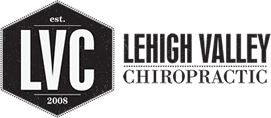Hamstring Strain
What is a Hamstring Strain?
A hamstring strain (otherwise known as “pulled hamstring”) is an injury to the one or more of the muscles that are collectively known as the hamstrings. The semitendinosus, semimembranosus, and biceps femoris (long and short heads) are located at the back of the thigh. These muscles work together to flex the knee and extend the hip. The muscles are commonly strained, stretched or torn while running (especially sprinting) and jumping. Certain athletic endeavors that involve bursts of activity such as football, basketball, dance, track, soccer, field hockey, and baseball are more likely to result in this type of injury. Injuries may be acute (sudden onset), or they may be chronic (especially seen in distance runner who consistently stress the area). This type of injury may result in mild pain and limited disability or may cause severe pain and debilitation. Unfortunately, these types of injuries heal slowly and athletes are prone to re-injury without the appropriate treatment. Proper warm-up, stretching and conditioning of the muscles may prevent the injury. The chiropractors at Lehigh Valley Chiropractic provide strategies for optimum athletic performance that will speed recovery and prevent recurrence.
ART is a unique soft tissue treatment that will enable the injury to heal faster and allow you to perform at your peak.
How is Hamstring Strain diagnosed?
Hamstring strains are classified by a grading system. A grade of 1 means there are micro-tears that have occurred within the muscle which cause pain and tightness in the back of the thigh. Generally there is little visual evidence of the injury (swelling, bruising, or redness). Grade 2 injuries are characterized by a loss of muscle strength against resistance due to a partial tear. Swelling, stiffness, decreased range of motion, and bruising are often present. With a grade 3 injury, there is a complete tear of muscle fibers which causes a great deal of pain and complete weakness. Inability to walk, discoloration, bruising and a bulge of muscle (where the tear occurred) are characteristic of grade 3.
Generally, hamstring strains are diagnosed by history and physical examination. The chiropractors at Lehigh Valley Chiropractic will ask you questions about the mechanism of your injury and perform orthopedic tests to evaluate the condition. In certain cases an MRI or other tests will be ordered to determine the extent of the injury.
What Are the Options for Treating Hamstring Strain?
Hamstring strains are commonly treated at Lehigh Valley Chiropractic. Depending on the extent of the injury, you will be provided with a treatment plan that will include Active Release Technique (ART), myofascial release and therapeutic exercise. ART is a unique soft tissue treatment that will enable the injury to heal faster and allow you to perform at your peak. Many active patients have reaped the benefits of chiropractic care. Schedule your appointment with one of our chiropractors and ride, run, dance, skate or ski your way to the top.
- Hamstring strain injuries: recommendations for diagnosis, rehabilitation, and injury prevention. Heiderscheit BC, Sherry MA, Silder A, Chumanov ES, Thelen DG.J Orthop Sports Phys Ther. 2010 Feb;40(2):67-81.Mangialardi R, Mastorillo G, Minoia L, Garofalo R, et al. Lumbar disc hernation and cauda equina syndrome. Considerations on a pathology with different clinical manifestation. Chir Organi Mov. 2002 Jan-Mar; 87 (1):35-42.
- The effects of active release technique on hamstring flexibility: a pilot study. George JW, Tunstall AC, Tepe RE, Skaggs CD. J Manipulative Physiol Ther. 2006 Mar-Apr;29(3):224-7.

 610-868-6800
610-868-6800



